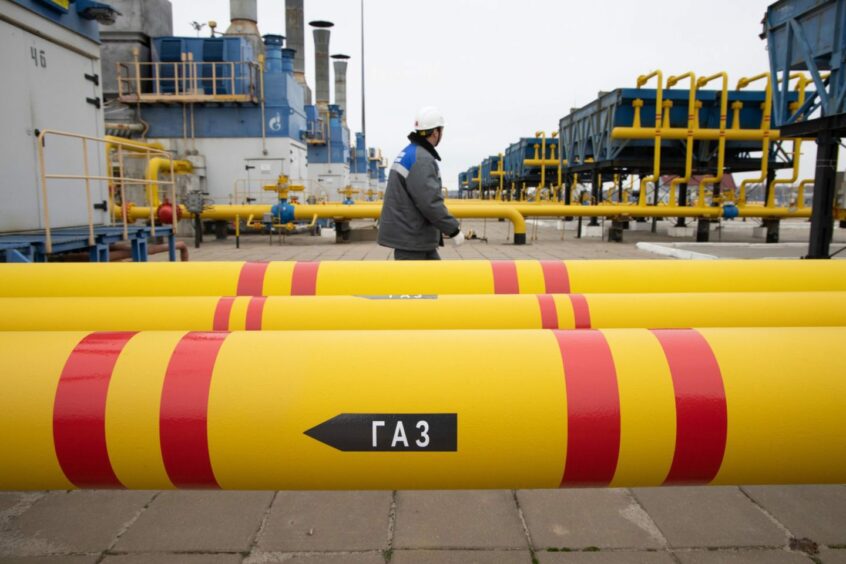
Russia started sending gas through its biggest pipeline to Europe after a 10-day maintenance period.
Flows via the Nord Stream link connecting Russia to Germany restarted on Thursday, a spokesperson for the pipeline operator said by phone. Restoring flows to the levels requested will take some time. Supplier Gazprom PJSC declined to comment.
The resumption of exports will provide some relief for the continent that’s racing to store the fuel before the winter. Orders for gas shipments signal flows via the pipeline will return to 40% of capacity, the same level prior to the maintenance.
Moscow has been curbing gas shipments to Europe for months, but the continent still relies on the little it’s getting to fill the retired salt caverns, aquifers and fuel depots that hold its fuel inventories. Without Russian gas, Europe is unlikely to have enough supply to warm homes and keep the lights on throughout the winter. The risk is massive economic damage.
Policy makers were preparing for the worst, with the European Union on Wednesday unveiling a plan to try to curb gas consumption by 15%. Budget Commissioner Johannes Hahn even said he didn’t expect the pipeline to come back.
European gas prices fell as much as 6.5% when the market opened, with the return of shipments surprising many traders who had expected the pipeline to remain halted after maintenance.
“There is still plenty of uncertainty over how flows will evolve in the coming weeks and months,” said Warren Patterson, head of commodities strategy for Dutch bank ING Groep NV, who expected prices to fall this morning. “So the market will still have to price in a fairly large risk premium.”
Russian President Vladimir Putin has indicated that flows could fall to 20% as soon as next week. Only two turbines at a compressor station in Russia, which feeds the pipeline, are currently working, he said, and one of them needs to go for maintenance this month. Flows could drop unless a replacement component sent from Canada, following sanctions-related delays, arrives in Russia soon, according to Putin.
Many have argued that Russia has more leverage if it keeps Europe guessing.
“Sending flows, but at capped levels, runs in Russia’s favor,” Tim Partridge, head of energy trading at DB Group Europe, said in a report on Wednesday. “It allows the Kremlin to continue to use the pipeline as a way of increasing volatility, while still reaping immense profits on inflated energy prices.”
The first hour of flows via the Nord Stream pipeline showed shipments at 30% of capacity, according to data from the link’s operator. After last year’s maintenance, it took about three hours for flows to ramp up fully, Morgan Stanley said in a report on Thursday.
“We are in process of resuming gas transportation,” Nord Stream AG said in a statement. “It can take few hours to reach the nominated transport volumes.”
European gas prices have surged over the past year, climbing to a record shortly after Russia invaded Ukraine. While prices have eased since then, they are still several times higher than the average of the past five years, boosting costs for consumers already contending with higher prices of everything from food to fuel.
Concerns about gas shortages have already spread to every market, knocking the euro to trade around parity with the dollar. A complete shutdown of Russian supplies will put Germany, Europe’s biggest economy, at the risk of losing almost 5% of its economic output, the International Monetary Fund warned.
Recommended for you
